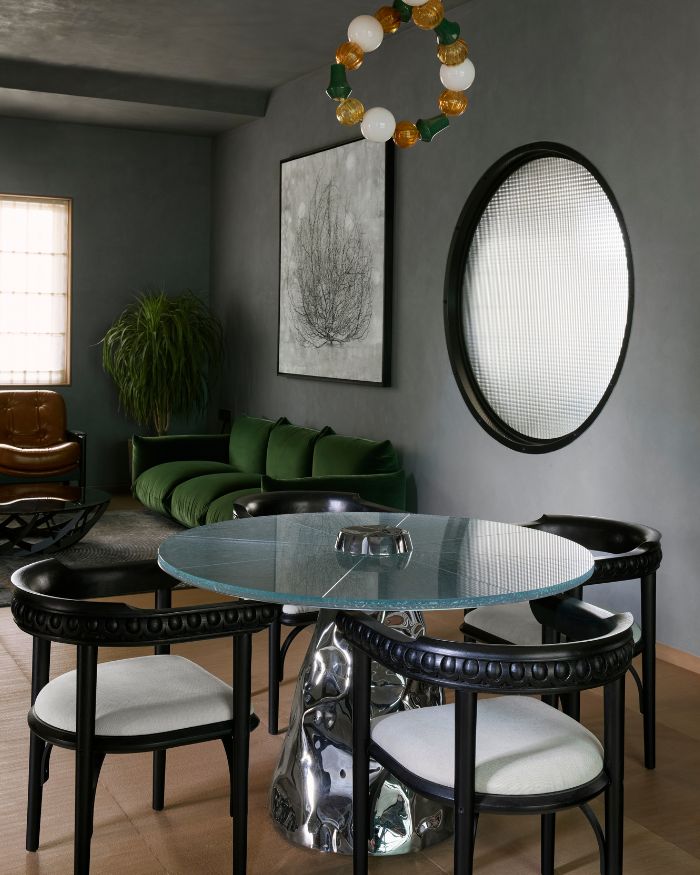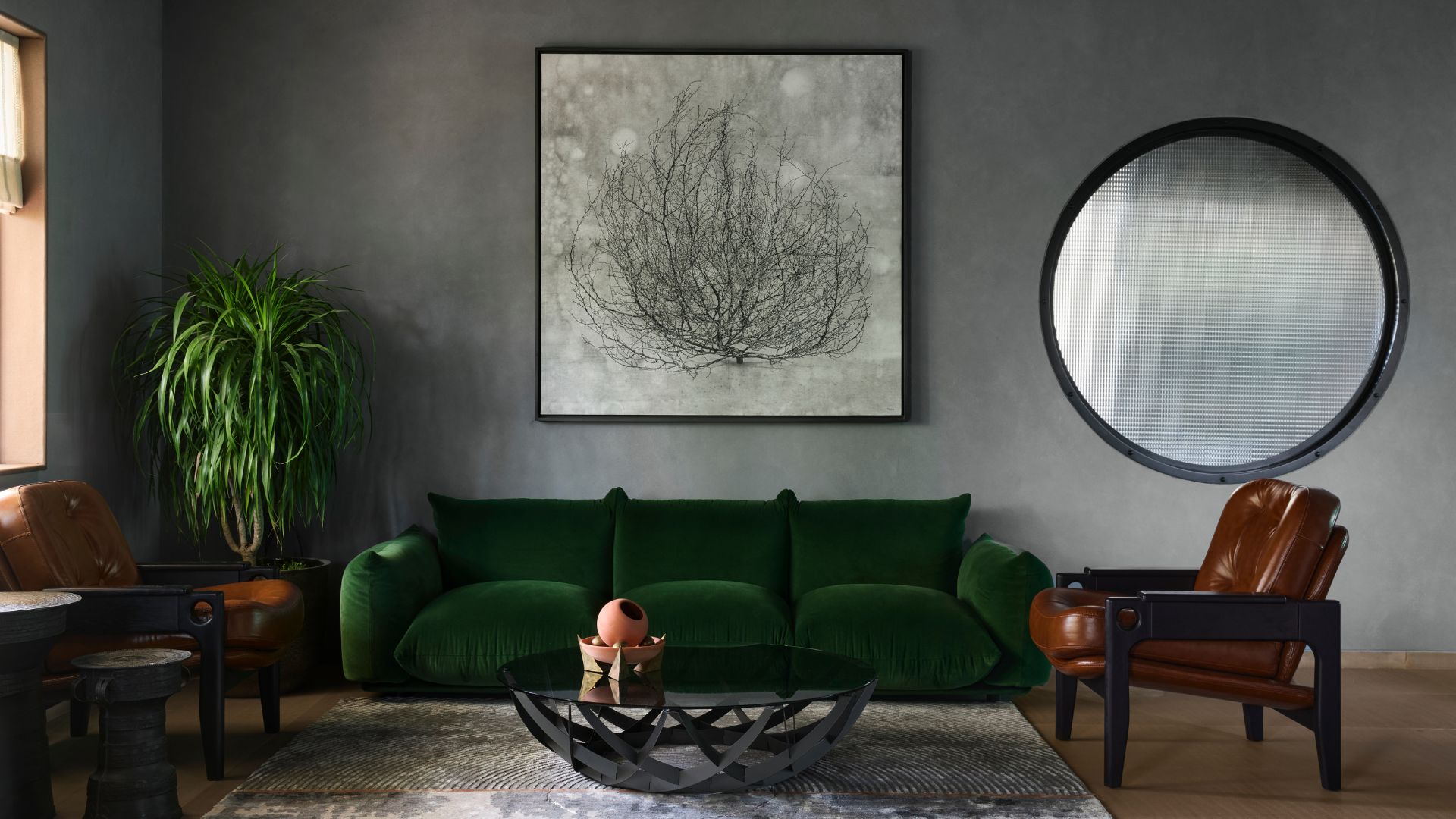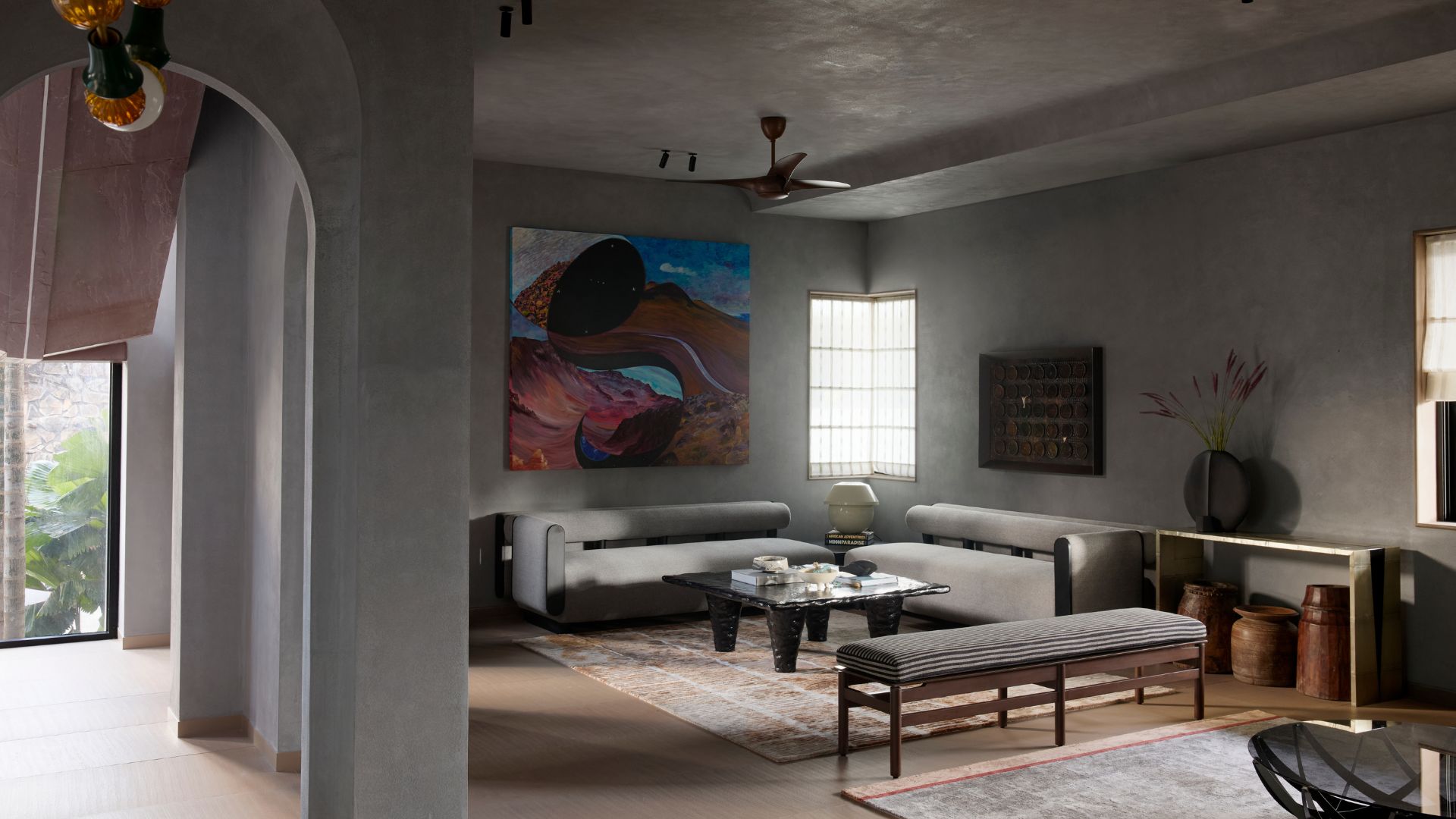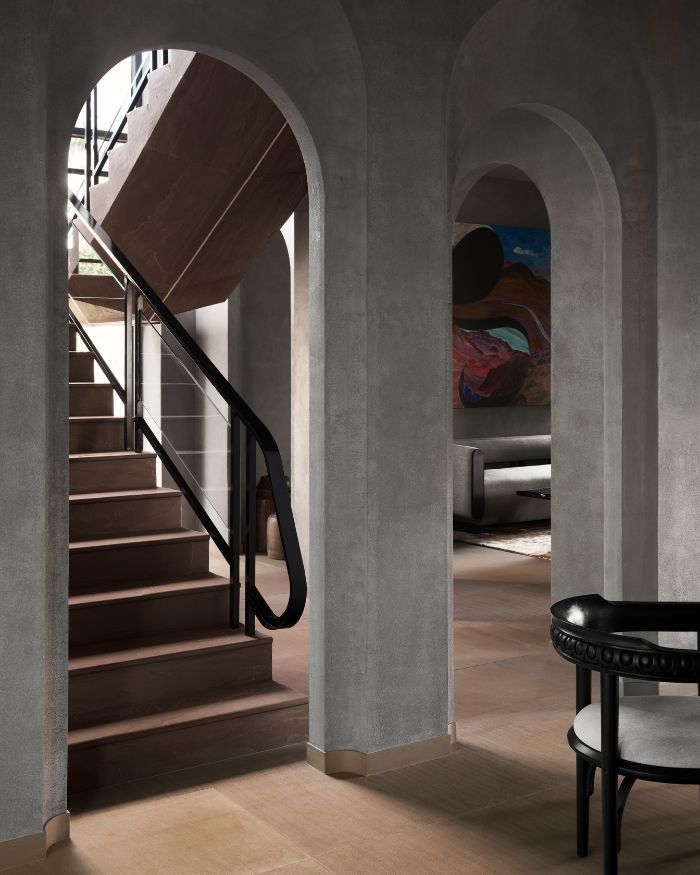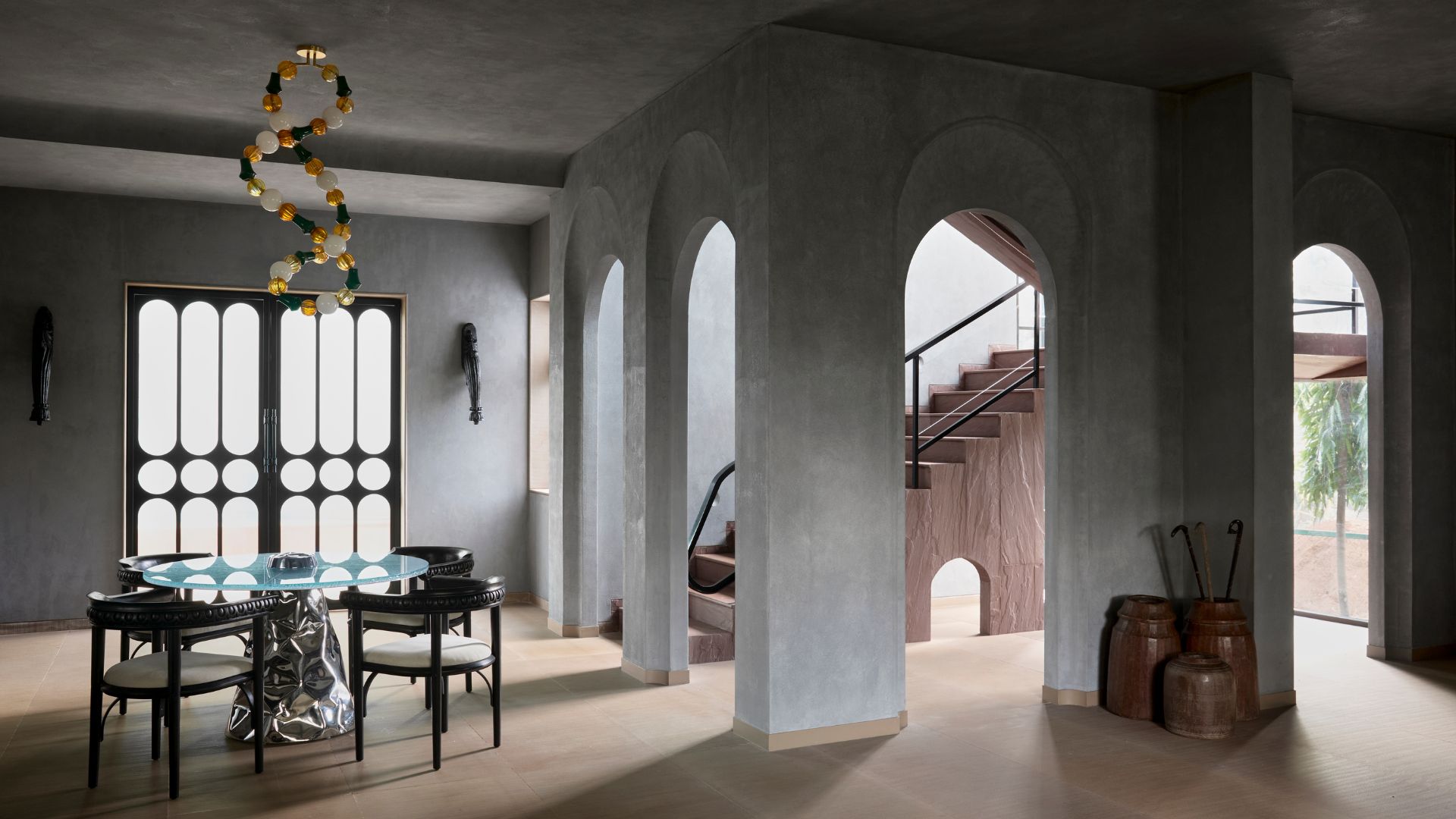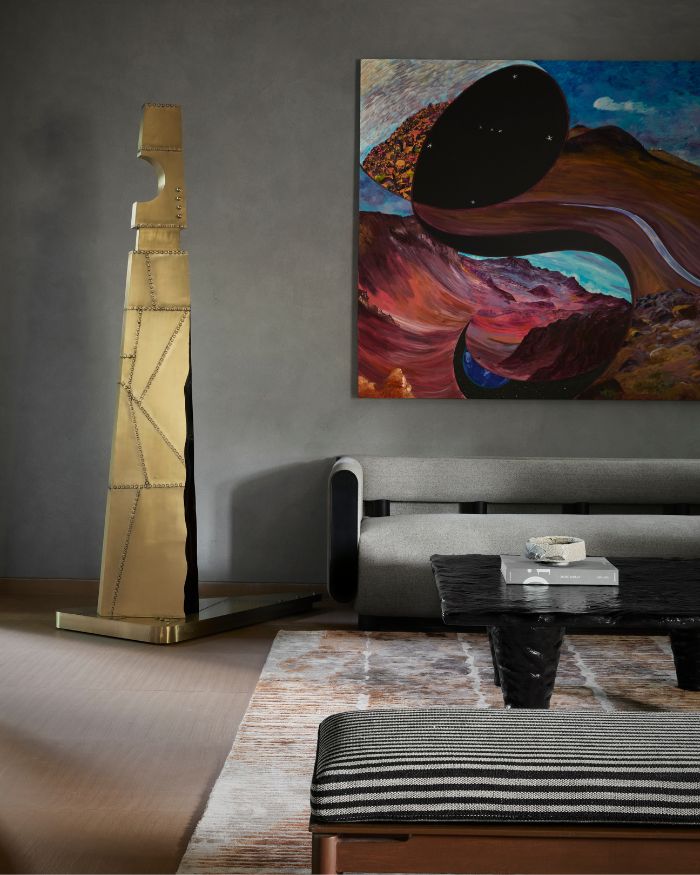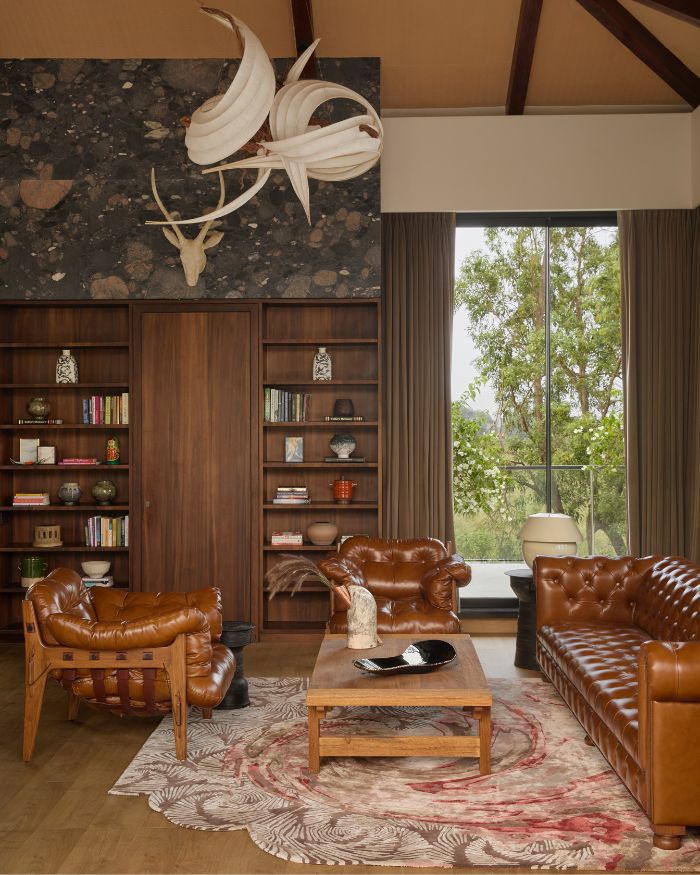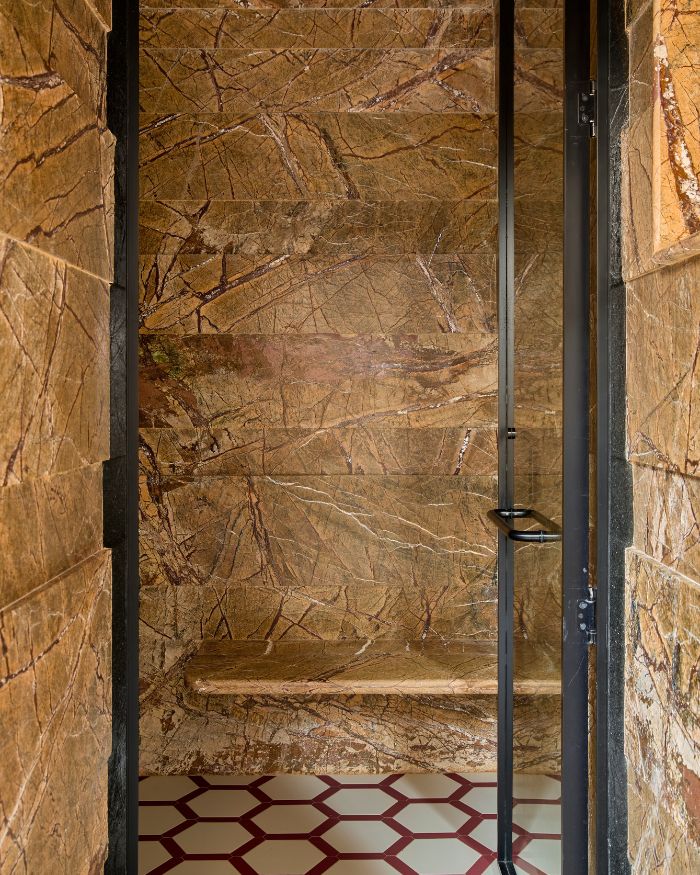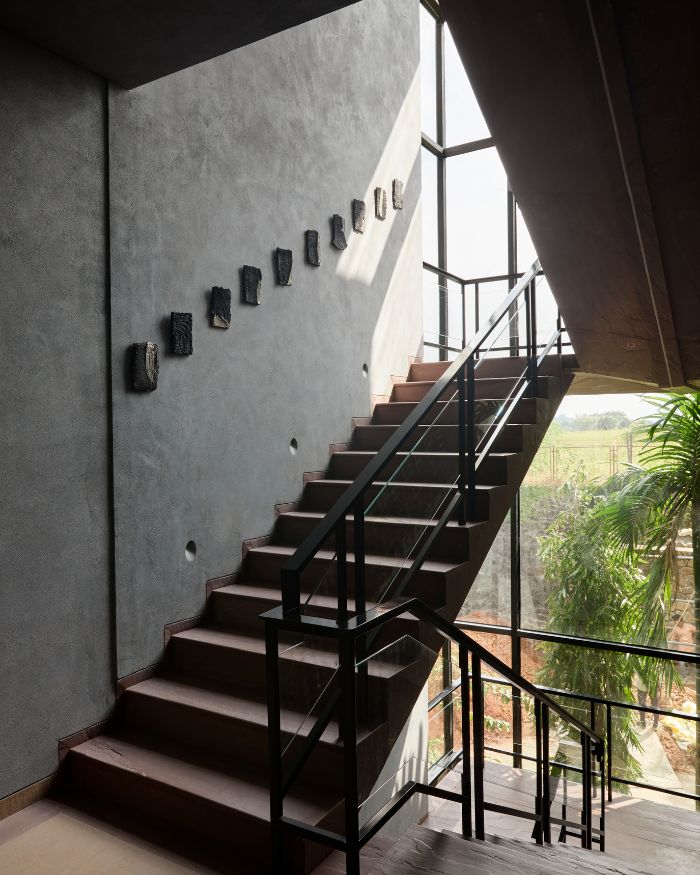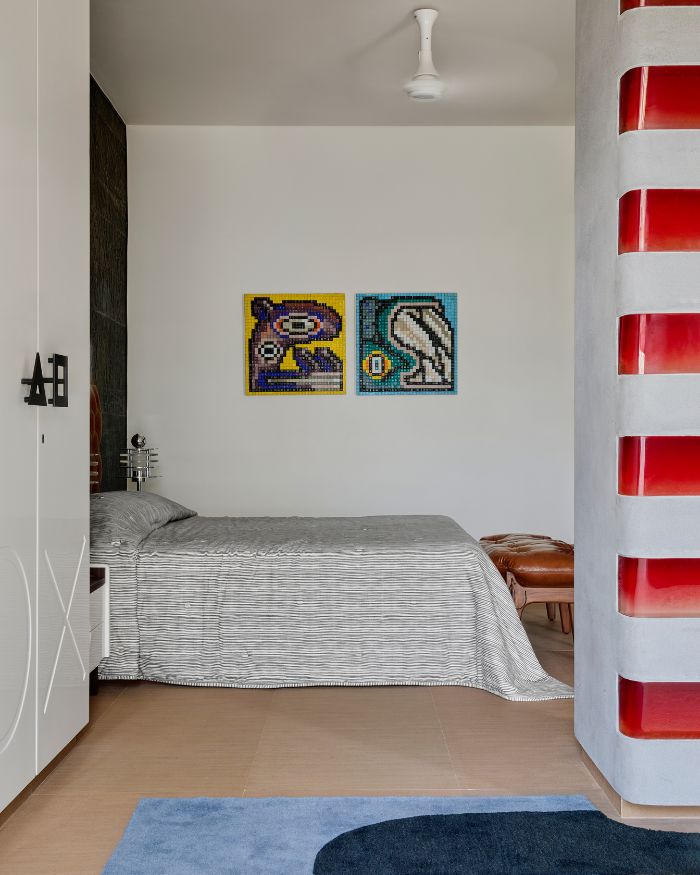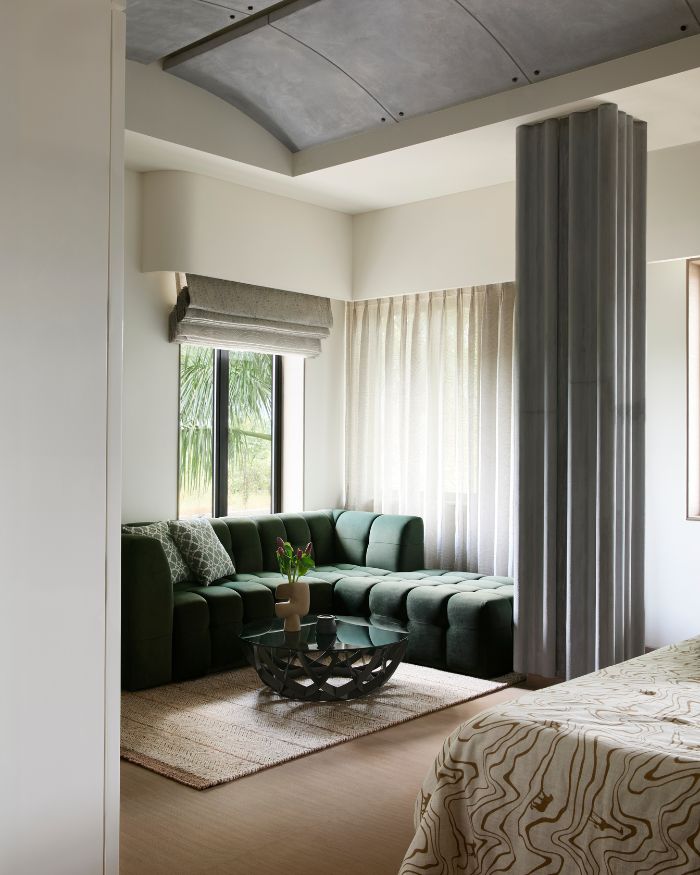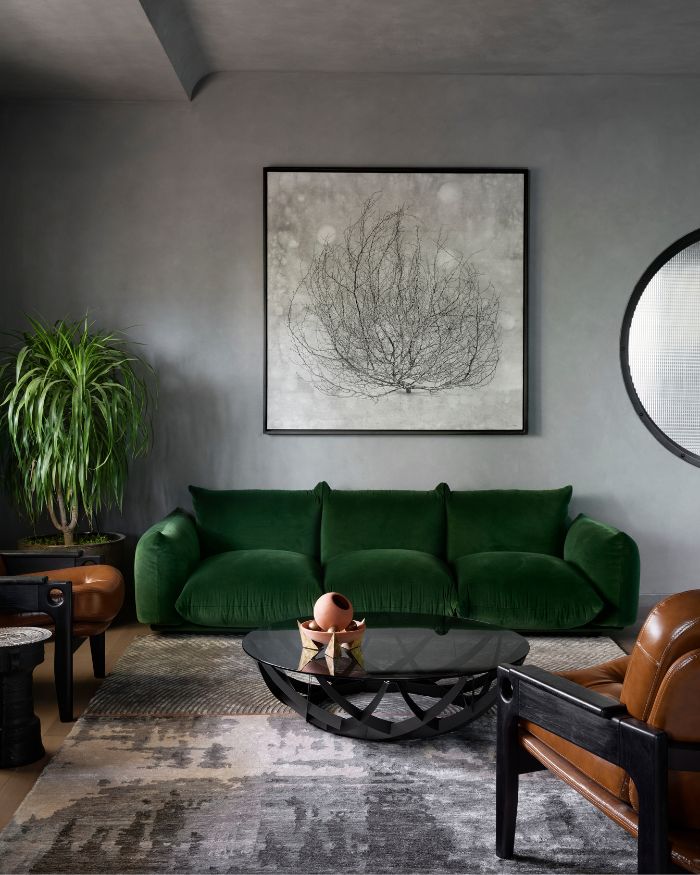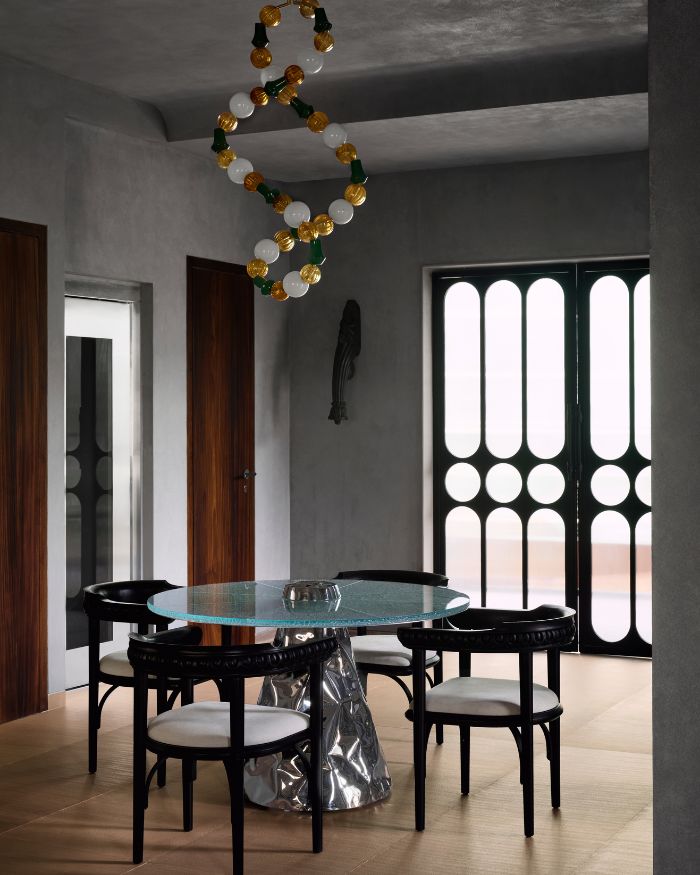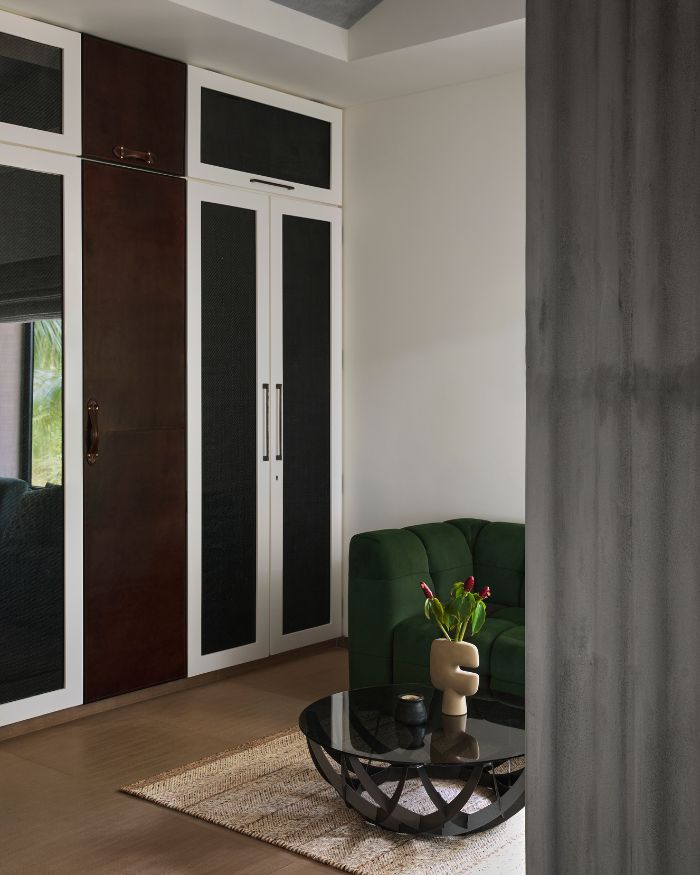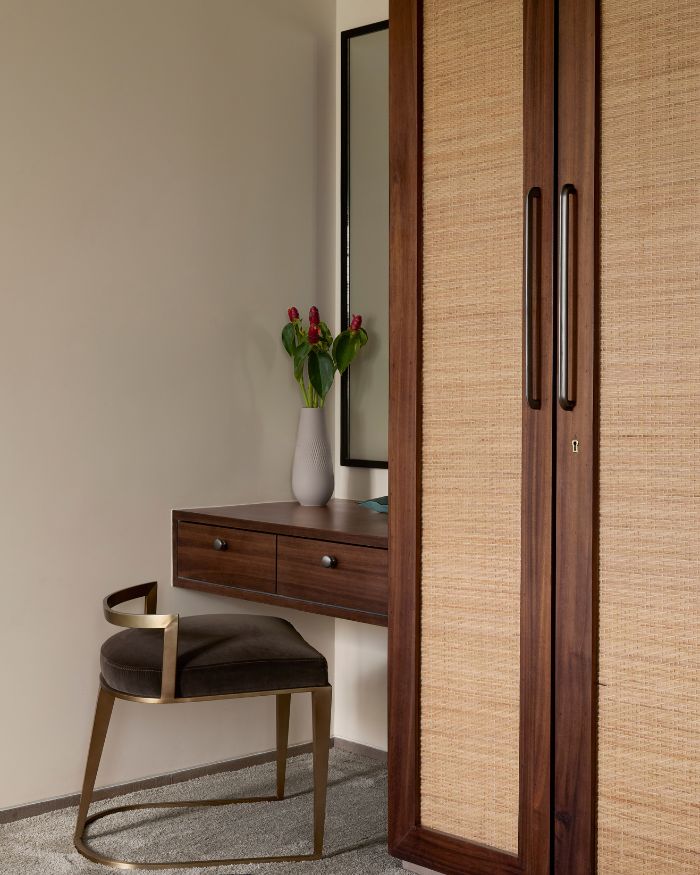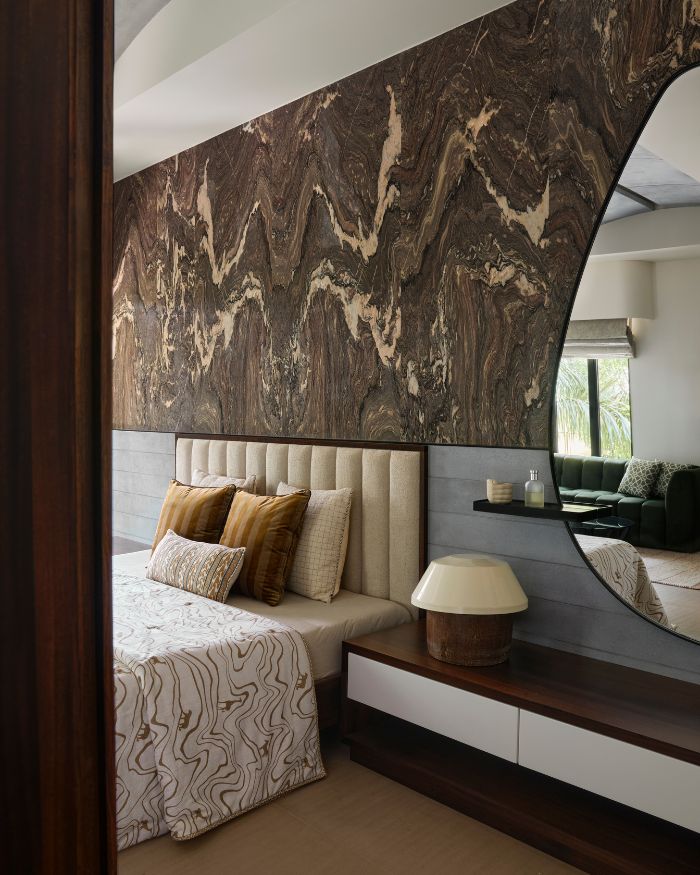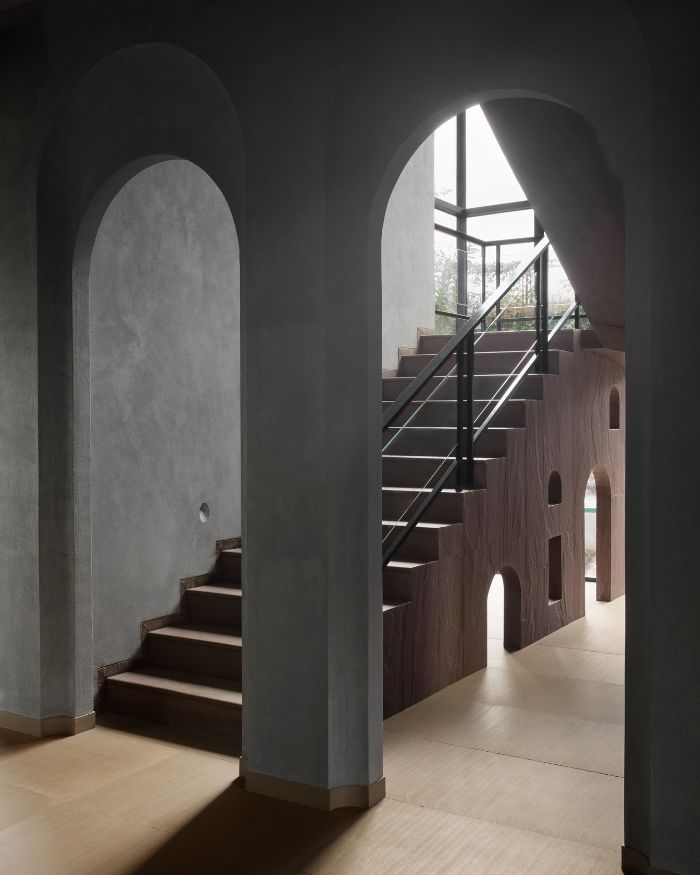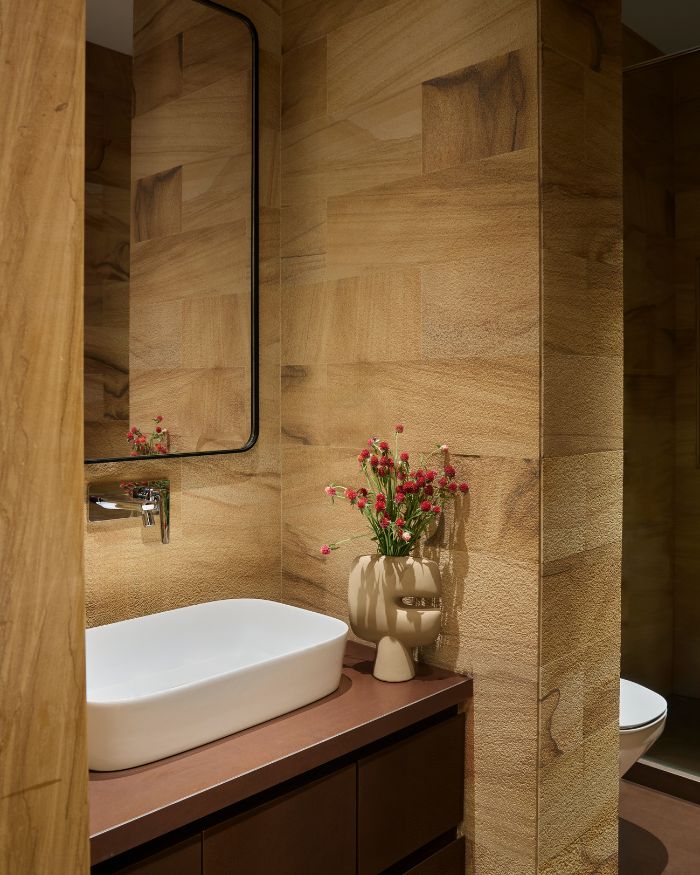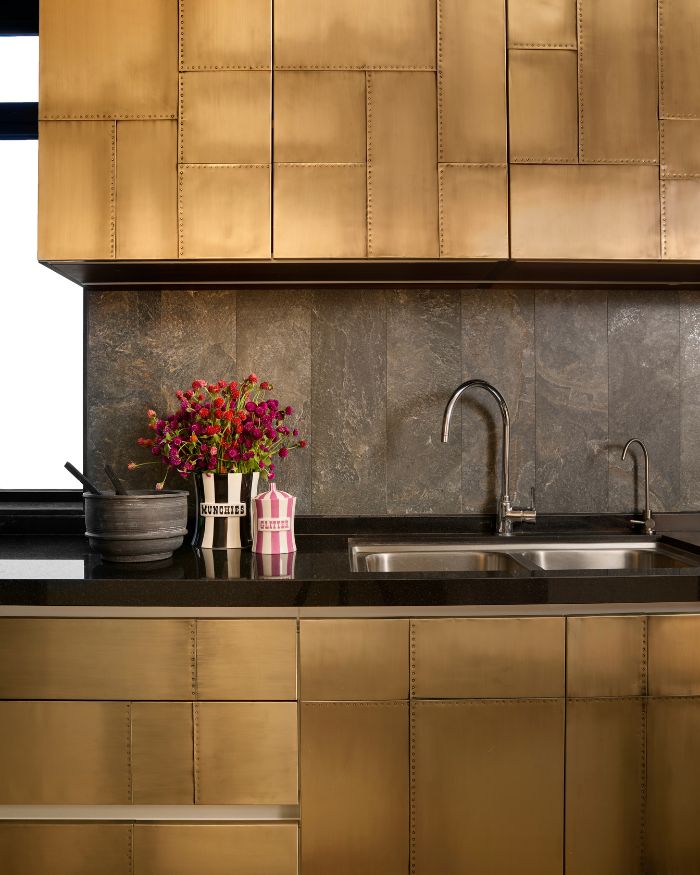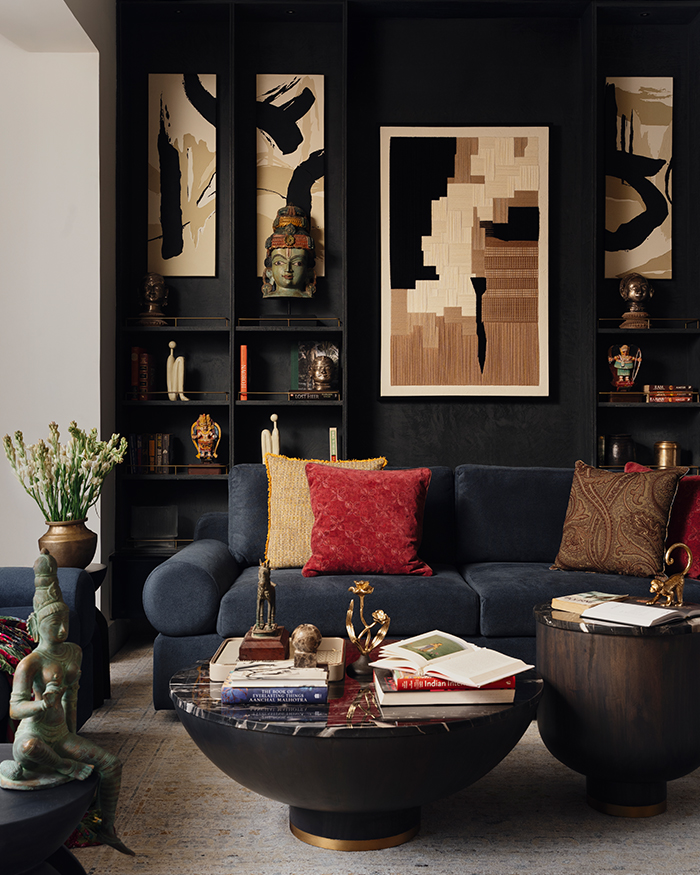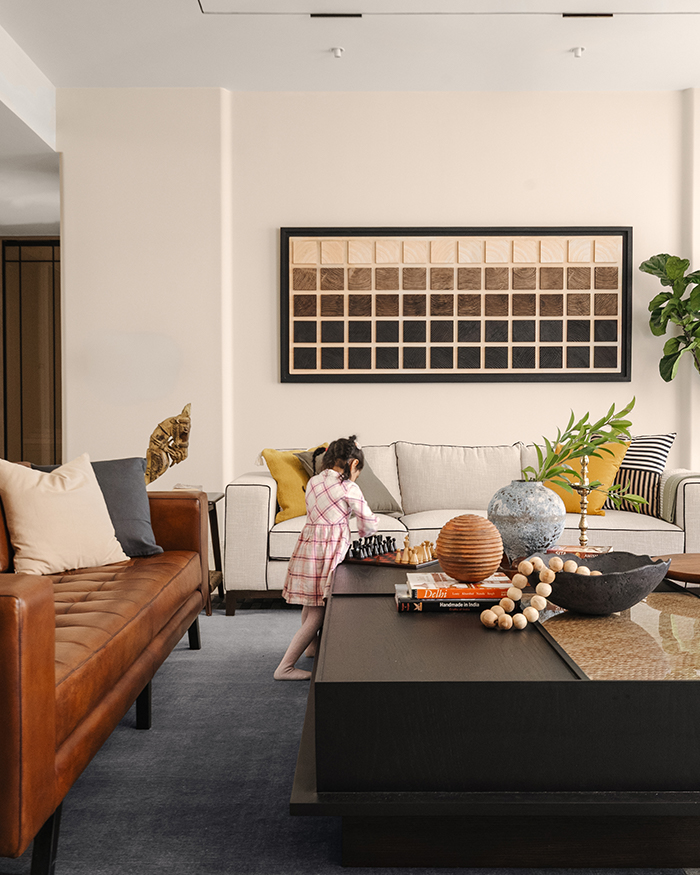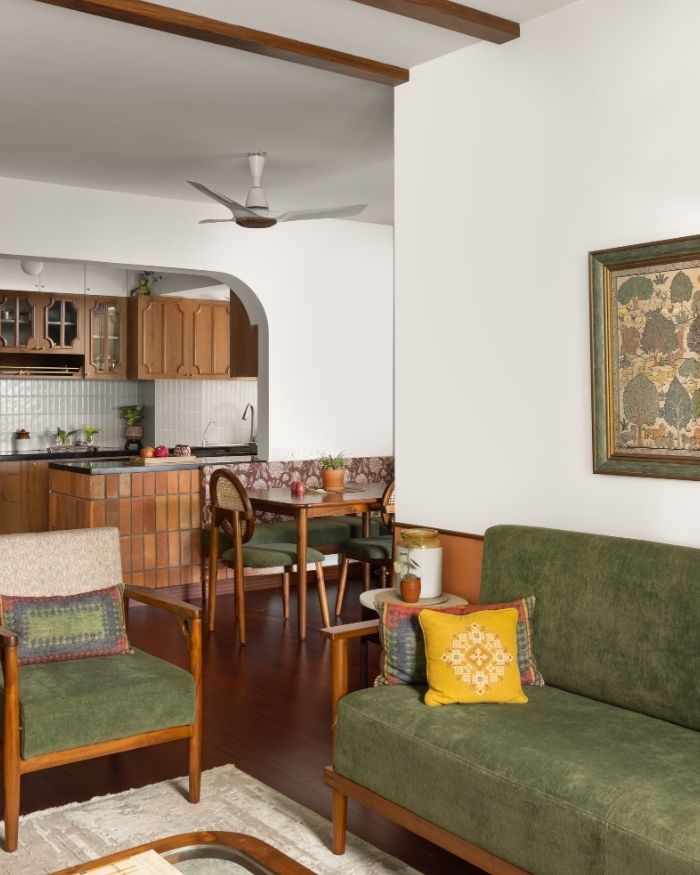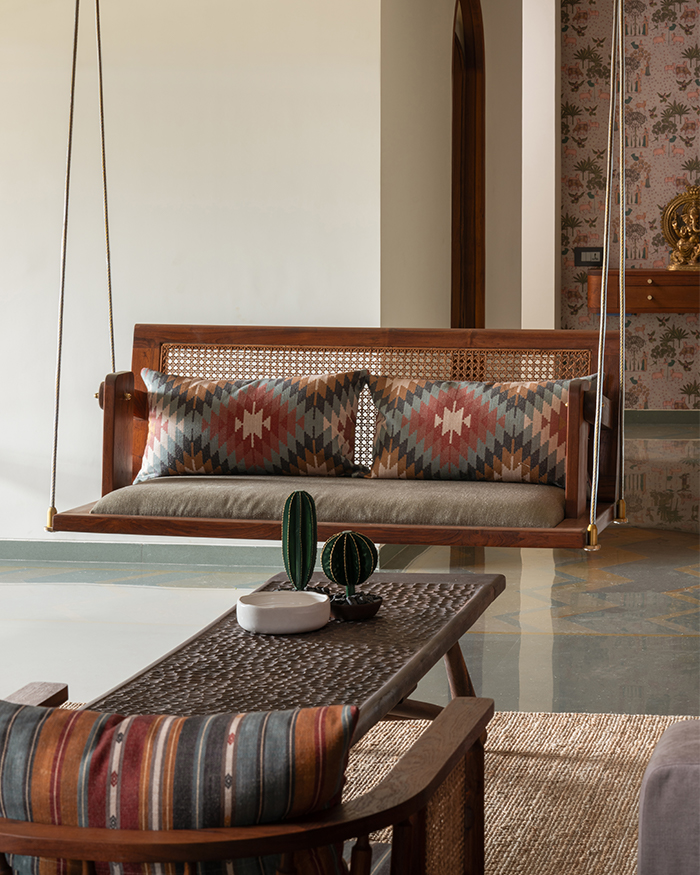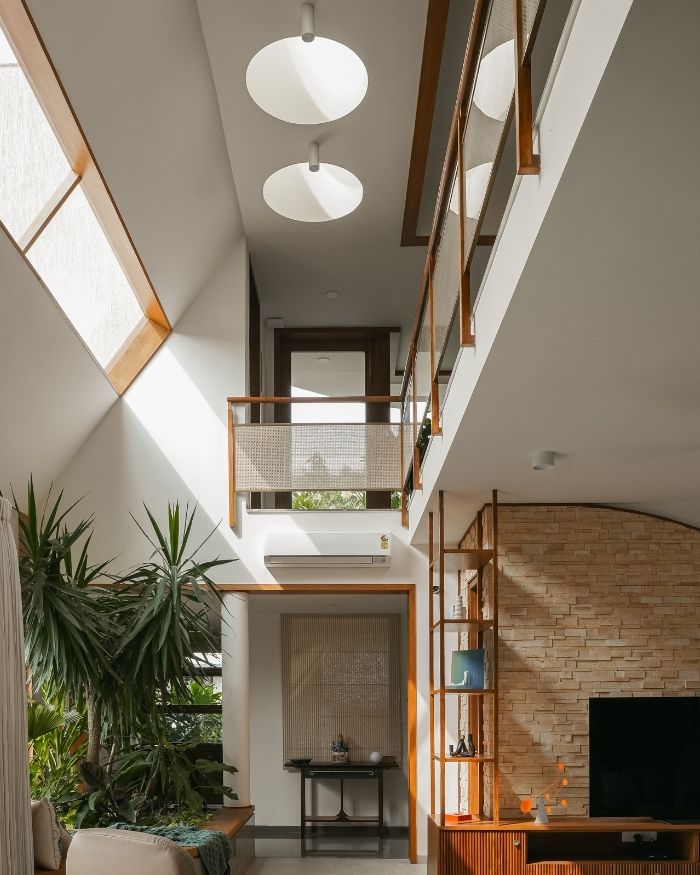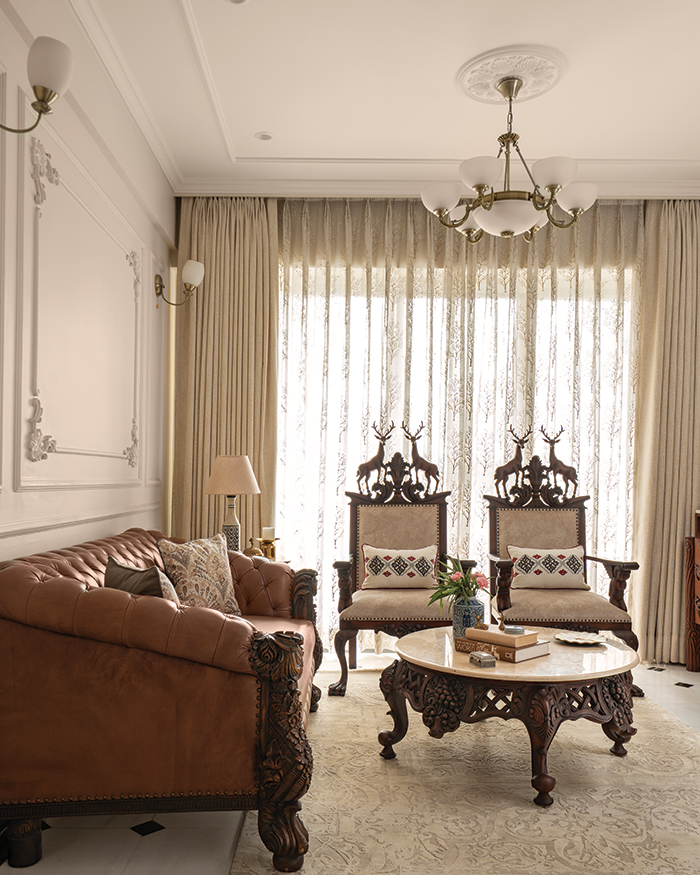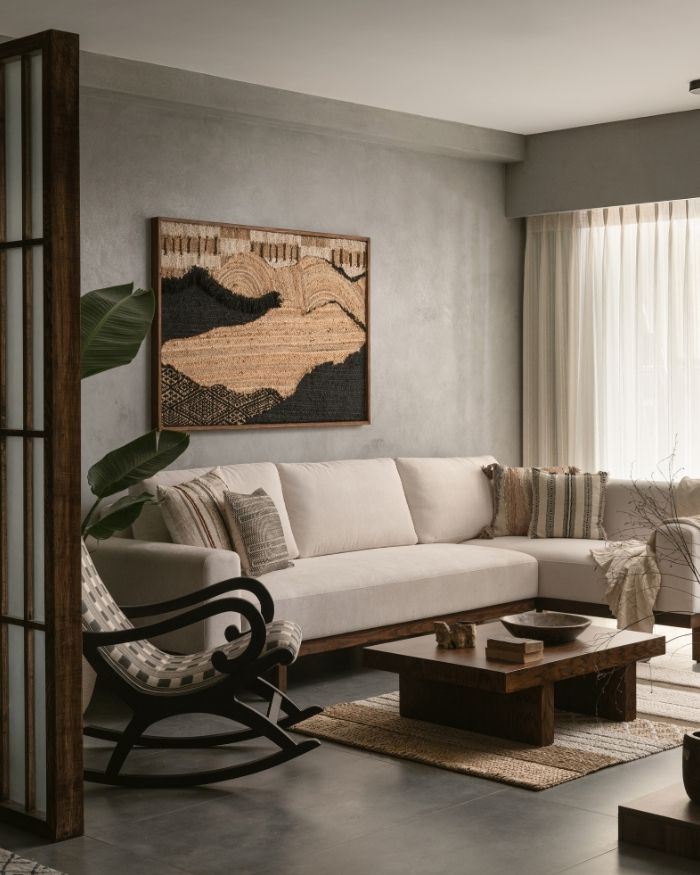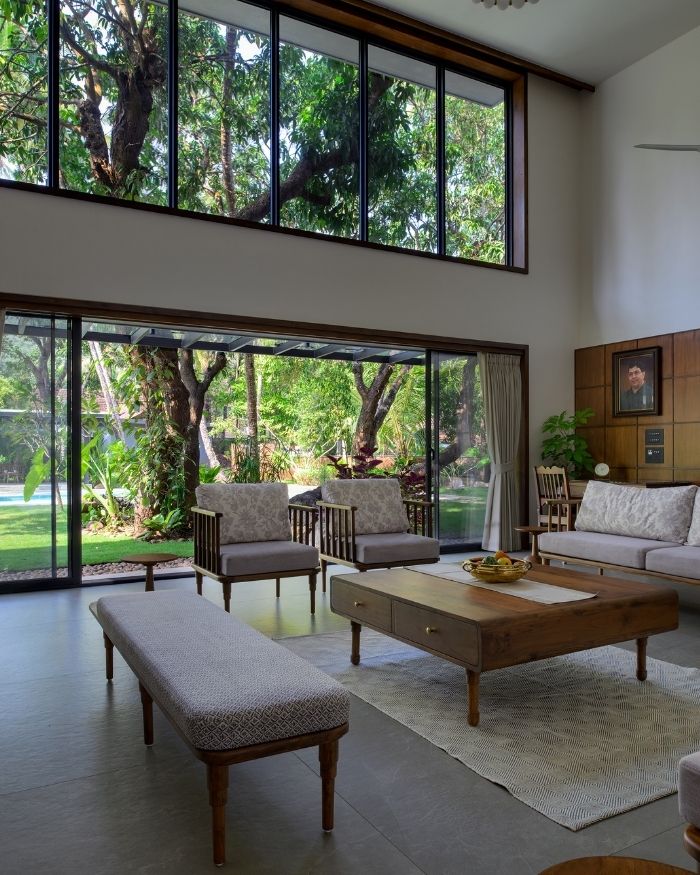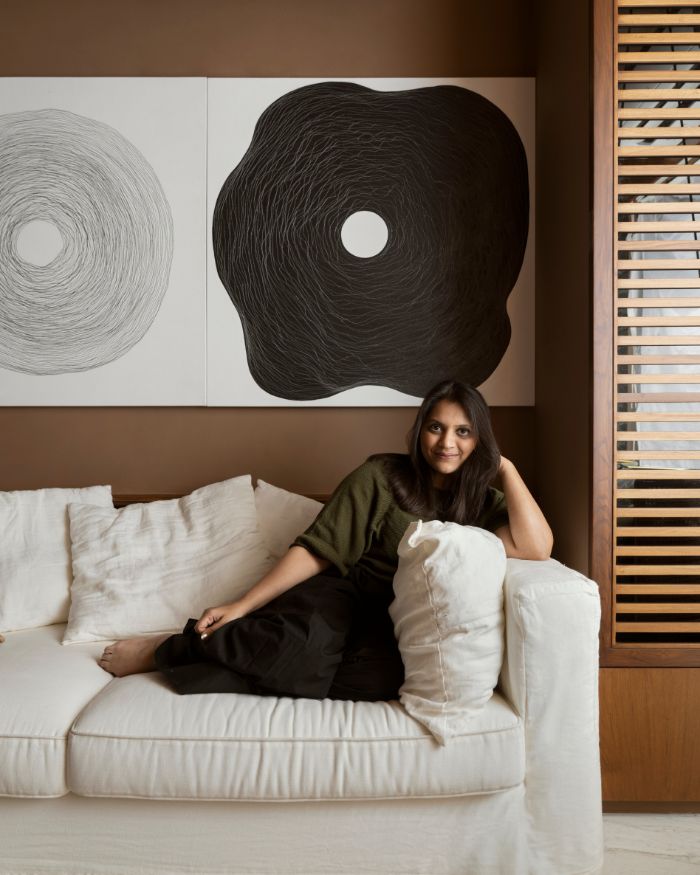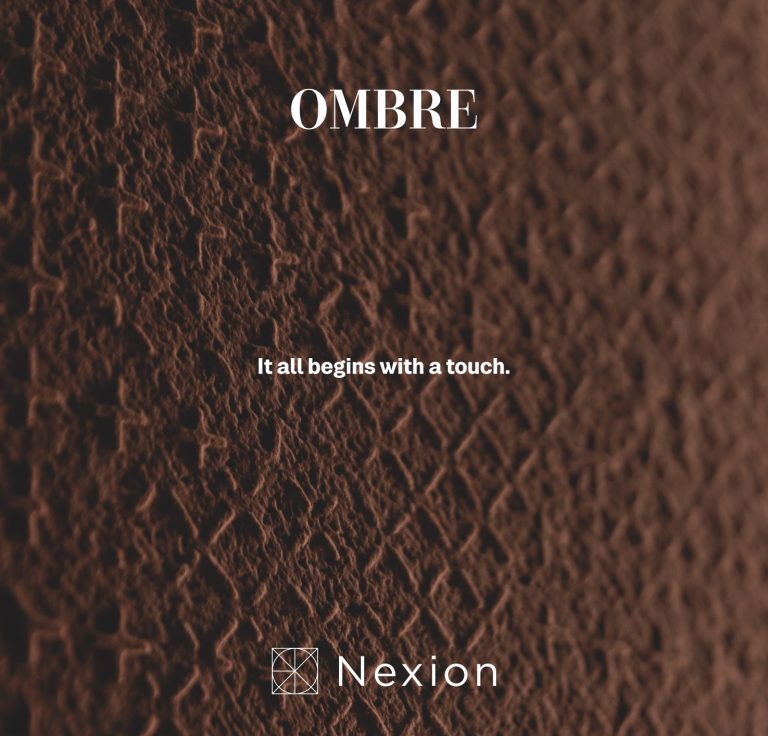At the cost of referencing a pop culture moment to re-enact the emotion one feels standing inside this brutalist-inspired home in Lonavala, I’m reminded — like the cinematic frames of the Academy award-winning The Brutalist (2024) — that the stoic beauty of concrete is far more than just a backdrop. In design, brutalism can be emotive, too. Imagined by Ali Baldiwala of Baldiwala Edge as a second home for dwellers who live in Mumbai, the space is a dance of balance between restraint and flamboyance, while still centred in the raw character of concrete.
But is a brutalist moodboard malleable? Ali believes so; who finds this answer and inspiration on his trip to Spain while watching an emotionally colourful Flamenco performance. “I was in the process of conceptualising the home when I had the chance to travel to Spain and Portugal. We went to a flamenco show one day, which was also my first time seeing this dance form,” he recalls and adds, “As dramatic as it sounds, I had goosebumps just seeing how the masculine and feminine demeanours of the woman and man would intertwine while performing the dance.”
“Brutalism became the structural backbone (of the home); a statement of resilience through bold geometry and honest materiality” — Ali Baldiwala
